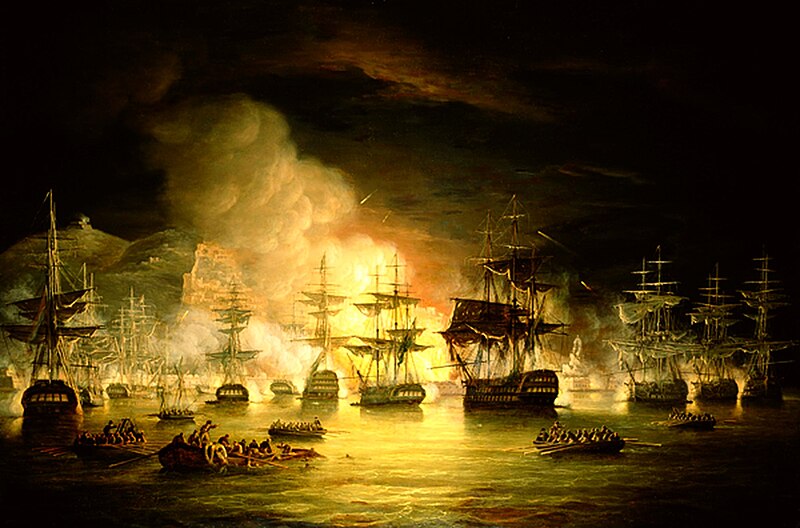The Orient—including present-day Turkey, Greece, the Middle East, and North Africa—exerted its allure on the Western artist’s imagination centuries prior to the turn of the nineteenth century...
Philippe-Jacques van Bree (1786 - 1871)
Gentile Bellini at the court of Mahomet II
Oil heightened with gold on panel
58.5 x 73.5 cm; 23 by 29 3/4 in
Private collection
Sold for 25,000 EUR in October 2015
Sultan Mohammed II, famous conqueror who besieged and captured Constantinople in 1453, was an avid collector of works of art. He brought the famous Venetian painter Gentile Bellini (circa 1429-1507) in Constantinople, on the occasion of the peace agreements signed between the Republic of Venice and the Ottoman Empire in 1479. On that occasion, the famous Bellini executed portrait Mahomet II, now preserved in the National Gallery in London. More Sultan Mohammed II, (See below)
Philippe-Jacques van Bree (1786 - 1871), scholar of his brother Mattheas, was born at Antwerp in 1786. He studied at Antwerp, in Paris (where he became a scholar of Girodet), and at Rome; and also visited Germany and England. He employed himself on historical, fancy, and architectural subjects. Of the last, the Belgian Government purchased his 'View of the Interior of the Church of St. Peter at Rome,' and presented him with a gold medal in addition to the price. He was made conservator of the Museum at Brussels, where he died in 1871. More on Philippe-Jacques van Bree
Gentile Bellini (1429–1507)
The Portrait of Ottoman Sultan Mehmed the Conqueror, 1480.
Oil on canvas
Height: 69.9 cm (27.5 in). Width: 52.1 cm (20.5 in).
Victoria and Albert Museum
As ruler of the expanding Islamic Ottoman Empire, Sultan Mehmet II was one of the most powerful men in the world when this portrait was painted. Fascinated by portraiture and European culture, he sent a request for a painter to the Venetian authorities in 1479. Gentile Bellini, having recently completed a series of portraits of the doges (elected rulers) of Venice, was well qualified for the task. The majority of those portraits were painted in the traditional profile view, but here Gentile has shown the Sultan’s face and body turned slightly towards the viewer, a new fashion in Venice. We can see many meticulous details, like the embroidered cloth hanging over the marble ledge, its many gems and pearls a sign of wealth and magnificence.
More on this painting
To further glorify the Sultan, Gentile included three golden crowns on either side of the arch – probably intended to represent Greece, Trebizond and Asia, which Mehmet ruled.
The attribution to Bellini is not proved, but the sitter is reasonably identified as Mehmet II (1432 - 1481). Gentile Bellini visited his court in Constantinople. There is insufficient evidence for deciding whether the picture is a copy or an original.
French School, 19th Century
WOMEN AND CHILDREN IN A COURTYARD
Watercolour on paper
48 x 39.5 cm; 18 7/8 by 15 1/2 in
Private collection
Art historian Marion Vidal-Bue was born and lived in Algiers until its independence. She comes from a family of builders established in the country in 1832. She has written books on painters of Algeria, especially to witness the artistic importance and influence of her native country at the time of the French presence.
She participated in the artistic illustration of the works of the Scientific Exploration of Algeria, published in 1844-1867, commissioned by the Minister of War in 1837. These watercolours form a rare and interesting set which shows scenes of life in Algiers 1830-1840 years; in the early days of the arrival of the French in Algeria.
French School, 19th Century
WOMEN IN AN INTERIOR WITH NURSE CONCERNED FOR A BABY
Signed lower left Durand
Watercolour on paper
48 x 39.5 cm; 18 7/8 by 15 1/2 in
Private collection
French School, 19th Century
SCENE IN A CAFE
Signed lower left Durand
Watercolour on paper
48 x 39.5 cm; 18 7/8 by 15 1/2 in
Private collection
French School, 19th Century
DANCER AND MUSICIANS
Signed, located and dated lower left Durand Algiers in 1840 (?)
Watercolour on paper
48 x 39.5 cm; 18 7/8 by 15 1/2 in
Private collection
French School, 19th Century
RECEPTION BY NIGHT IN A PALACE
Signed lower left Durand
Watercolour on paper
48 x 39.5 cm; 18 7/8 by 15 1/2 in
Private collection
French School, 19th Century
MUSICIANS AND AFRICAN DANCERS IN THE COURTYARD OF A PALACE
Watercolor on paper
48 x 39.5 cm; 18 7/8 by 15 1/2 in
Private collection
FRENCH SCHOOL OF NINETEENTH CENTURY
ACROBATS
Signed lower right Durand
Watercolour on paper
25.5 x 40 cm; 10 by 15 3/4 in
Private collection
Jean-Leon Gerome, VESOUL 1824 - 1904 PARIS
STUDY FOR A MOORISH BATH, TURKISH WOMAN IN BATH
Oil on canvas
50.5 x 40.5 cm; 20 by 16 in
MFA Boston
This study is a preparatory sketch for the large painting (81,5 x 65,5cm) A Moorish bath, Turkish woman bathing, painted in the 1870s and kept in a private collection (See Below). There are some other known preparatory studies: a drawing of the same composition and the same dimensions as our sketch and two oil sketches, larger format than the one presented here.
For Gérôme, a good academician, the creative process was primarily intellectual. He reflected on a conception of the final composition, which he then seized on an initial study that was the basis for the further work. This is probably the first study of a Turkish bath, a Turkish woman bathing, which explains its freshness and spontaneity.
Gérôme worked hard on the silhouette and the attitude of the nude bather.
In all known studies to a Turkish bath, a Turkish woman bathing, the African servant is outlined. It is only in the finished work that the face appears clearly.
Gérôme tried to create an intense psychological relationship between bather's surprise at a specific time of her dress, and her maid; he is leaning over the basin, hands resting on the edge, tense, waiting impatiently for the moment when she will feel, just out of the bath, the delicious sensation of cold foam soap.
Studies and sketches of Gerome oils were often completed by other painters, to make them more commercial. Our sketch was lucky to escape the retouching and remain intact, unaltered and entirely Gérôme's hand. More on this painting
Jean-Léon Gérôme (1824–1904)
Moorish Bath, c. 1870
Oil on canvas
height: 50.8 cm (20 in); width: 40.6 cm (15.9 in)
Museum of Fine Arts Boston
Jean-Léon Gérôme
The Bath, ca. 1880-1885
Place of Creation
Oil on canvas
29 x 23 1/2 in. (73.7 x 59.7 cm)
Fine Arts Museums of San Francisco
Jean-Léon Gérôme (11 May 1824 – 10 January 1904) was a French painter and sculptor in the style now known as Academicism. The range of his oeuvre included historical painting, Greek mythology, Orientalism, portraits and other subjects, bringing the Academic painting tradition to an artistic climax. He is considered one of the most important painters from this academic period, and in addition to being a painter, he was also a teacher with a long list of students. More on Jean-Léon Gérôme
Jean-Leon Gerome
VESOUL 1824 - 1904 PARIS
A MOORISH BATH, TURKISH WOMAN IN BATH, 1885
The final painting
Private collection
Frederik-Jan-Pieter Portielje
AMSTERDAM 1829 - 1895 ANTWERP, DUTCH SCHOOL
YOUNG LADY WEARING A MIDDLE-EASTERN COSTUME
Signed lower right Portielje
Oil on panel
59 x 48 cm; 23 1/4 by 18 7/8 in
Private collection
Jan Frederik Pieter Portielje (Amsterdam, 1829 - 1908) was a Dutch-Belgian painter. He was the tenth child by Gerrit Portielje, bookseller and publisher in Amsterdam, and Jacoba Zeegers. He studied at the Academy of Amsterdam from 1842 to 1849 with, among others, Valentine Bing and Jan von Braet Uberfeldt. Between 1851 and 1853 he stayed several times for extended periods of time in Paris, possibly during the summer months when the Academy was closed due to holidays. He also worked as a portraitist and as such had a growing clientele in Brussels and Antwerp.
His oeuvre includes portraits, scenes of elegant ladies in gardens, parks, or luxurious interiors. The interiors are either heavy or elegant neo-Baroque Napoleon III. He painted Western and Southern or Oriental women, often adorned with jewels. His painting are realistic, with an eye for detail and texture, intended as an elegant genre painting without much depth.
On some paintings he collaborated with another artist. There are paintings known, together with Frans Lebret (1820-1909) and Eugène Remy Maes (1849-1931).
After his studies Portielje remained in Antwerp. He married there in 1853. More on Jan Frederik Pieter Portielje

Emile Régnault de Maulmain
MARKET SCENE IN A STREET
Oil on canvas
55.5 x 40.8 cm; 21 7/8 by 16 in
Private collection
Sold for 5,625 EUR in Oct 2015
Emile Regnault de Maulmain
THE REST IN THE OASIS
Oil on canvas
47 x 73 cm; 18 1/2 by 28 3/4 in
Private collection
Sold for 8,375 EUR in Nov 2013
Maulmain Emile Regnault, 1836-1897, French school. Maulmain was a pupil of Miss Lamotte Lobrichon and Alberto Pasini. He exhibited at the Salon from 1863 until 1882, especially scenes of Algeria.
Georges Washington 1827 - 1910
BATTLE SCENE
Oil on canvas
46 x 55 cm; 18 1/8 by 21 2/3 in
Private collection
Estimate for 15,000 - 20,000 EUR in Oct 2015
George Washington, born 15 September 1827 in Marseille and died November 19, 1901 in Douarnenez, was a French Orientalist painter. Like most aspiring artists, the young Georges Washington moved to Paris, where he trained at the Ecole des Beaux Arts under François-Edouard Picot (1786-1868). The artist’s exotic style was also indebted to Eugène Delacroix (1798-1863). Washington’s art conveys a similar feeling to the work of Eugène Fromentin (1820-76) who often painted naturalistic Middle Eastern scenes of rural and nomadic life. Washington’s love of the Middle East and its customs was further enhanced and encouraged by his father-in-law, the military and Orientalist painter Henri-Félix-Emmanuel Philippoteaux (1815-1884), whose daughter Anne-Léonie Philippoteaux married Washington in Paris on 6th August 1859.
Not long after finishing his training at the Ecole des Beaux Arts, Washington embarked on the first of a number of trips to Algeria and based on close observation of its inhabitants, their dress and customs in 1857 he made his Paris debut at the Salon des Artistes Français with a view of nomads titled Plaine du Hoiina (Sahara Algérien). From then up until 1901 Washington continued to be a popular exhibitor at the Salon; one of his first works shown there to gain critical acclaim was Nomades dans le Sahara en Hiver. In addition to Paris, Washington also showed his work in Moscow in 1881 and was later posthumously honoured when four of his paintings were included in the Exposition Coloniale de Marseille in 1906.
Following two commissions from a Belgian company, he travelled to Morocco and then subsequently visited Hungary, Bulgaria and Turkey, which were to inspire his varied subjects including battle scenes and cavalry skirmishes. His travels also took him to America for the unveiling in Philadelphia of a cyclorama (a monumental 360° panoramic view) of the Battle of Gettysburg by his brother-in-law Paul-Dominique Philippoteaux (1846-1923).
Following the death of his wife he retired to live with his daughter and son-in-law at Douarnenez on the Brittany coast, where he died shortly after on 19th November 1901. More George Washington

Henri Rousseau
CAIRO 1875 - 1933 AIX EN PROVENCE
THE FANTASIA OF NEMENCHAS, ALGERIA
Oil on canvas
65 x 92 cm; 25 5/8 by 36 1/4 in
Private collection
Sold for 42,500 EUR in Oct 2015
Rousseau creates a fantasy he chooses to place on the plateau of Nemenchas, Algeria. The tight framing on the group of riders launched in full immerses the viewer in the scene. The proximity thus created communicates a feeling of intense movement. The determination and pride of the riders and their horses, some of which rear up in a frenzy, is beautifully rendered in vibrant color buttons.
Henri Rousseau Henry, Emilien Rousseau (Cairo 1875 - Aix-en-Provence in 1933) is an Orientalist painter. A pupil of Jean-Léon Gérôme at the Beaux Arts in Paris, he won the second Grand Prix de Rome in 1900 and a travel grant at the Salon of French Artists. He traveled to Belgium, the Netherlands, North Africa, Spain and Italy where he admired the great masters (Rubens, Rembrandt, Velasquez, Murillo, the Titian, Raphael etc ...)
After this initiatory journey, he settled in Versailles and set up his studio at the Villa des Arts in Paris. In 1919 he moved to Aix in Provence with his large family (seven children). Knight of the Legion of Honour in arts. His work is dedicated to Tunisia, Algeria and especially Morocco, Provence and the Camargue remained its anchor points. His success was with a bourgeois and wealthy clientele, where he sold his work at numerous exhibitions in Paris, Brussels, Stockholm, Marseilles. More on Henri Rousseau Henry, Emilien Rousseau

Jules-Pierre van Biesbroeck
PORTICI 1873 - 1965 BRUXELLES, ECOLE BELGE
WOMAN CARRYING AN AMPHORA
Oil on panel
58 x 32.4 cm; 22 4/5 by 12 1/4 in
Private collection
Sold Oct 22, 2015
Jules Pierre van Biesbroeck was born in Italy in 1873. His father was the Belgian painter Jules Evariste van Biesbroeck and like many artists of his time, he was working in Italy when his son Jules was born. The child was two years old when the family returned to Ghent.
After a short period of practice with his father, van Biesbroeck was enrolled in the Academy of Fine Arts in Ghent. He was a child prodigy and sold his first painting at the age of 14 during the Triennale Ghent Exhibition. In 1888, when he was 15 years old, he made his debut at the Salon des Champs-Elysées in Paris with a monumental canvas which stood out because of his nude models. The canvas scandalized the censors and the young artist was asked to cover his figures with drapery before the painting could be exhibited. The jury gave Van Biesbroeck an honorable mention on the recommendation of William Bouguereau. Van Biesbroeck won fame in sculpture as well as paintings and was rewarded with many commissions for the city of Ghent.
When German troops invaded Belgium during World War I, Van Biesbroeck went to Bordighera in Italy where he continued to paint and sculpt. In 1926 he made a trip to North Africa, then in 1927, he visited Algeria. The light and atmosphere of Maghreb caused him to change his palette and employ lighter colors and represent orientalist subjects, particularly the inhabitants of Bou-Saada. Algiers had such an influence on the artist, that he lived there for nine years. In 1938 he returned to Ghent, and continued to paint orientalist works. Portrait of a Blind Arab dates from Van Biesbroeck’s early period in Algeria.
More on Jules Pierre van Biesbroeck

Attributed to George Derville Rowlandson, 1861 - 1928
CAVALIERS COMING OUT OF A FORTIFIED GATE, c. 1888
Oil on canvas
83.5 x 61 cm; 32 7/8 by 24 in
Private collection
Estimated for €4,000 EUR - €6,000 EUR in Oct 2015
George Derville Rowlandson (1861–1928) was a British painter. He is best known for his equestrian portraits. Some of his work can be found at the Museum of Polo and Hall of Fame in Lake Worth, Florida.
Rowlandson was born in India in 1861 and studied art at Gloucester Art School, Westminster and Paris. He exhibited at the Royal Institute of Painters in Watercolour between 1911 and 1918 from 22 Priory Road, Bedford Park, London. He contributed illustrations to The Illustrated London News and the English llustrated Magazine, his work being mostly military or equestrian subjects, and a number of hunting scenes. More on George Derville Rowlandson
Emmanuel Dieudonné
THE SLAVE MERCHANT
Oil on canvas, unframed
42 x 61 cm; 16 1/2 by 24 in
Private collection
This is a preparatory sketch for the large painting, signed lower left E. DIEUDONNE, kept at the National Federation of André Maginot, Paris. A pupil of Cabanel, Emmanuel Dieudonné exhibited at the Salon from 1876. He made many Orientalists compositions.
Karl Wilhelm Gentz (1822 - 1890)
NUBIAN HUNTERS
Oil on canvas
166 x 139 cm; 65 1/3 by 54 3/4 in
Private collection
Sold for 9,375 EUR Oct 2014
Karl Wilhelm Gentz (1822 - 1890) was a German painter. The second child of Johann Christian Gentz. Initially enrolled at Berlin's Friedrich Wilhelm University, he decided at age 21 to study painting. He attended the prestigious Atelier Kloeber and studied in 1845 for nine months at the Antwerp Academy of Fine Arts. He entered the school Atelier Paul Delaroche, which was then under the direction of Charles Gleyre. In 1847 he traveled to Spain and Morocco Returning to Paris, he painted The Prodigal Son in the desert, a life-size figure. In 1850 he went to Marseille and Malta, then Egypt and the Sinai; on his way back he traveled over Asia Minor, the Greek archipelago, Constantinople and Vienna.
In 1852, while living temporarily in Berlin, his first paintings of oriental life emerged: "Slave Market" and "Egyptian School". Not satisfied, Gentz returned to Paris and joined the studio of Thomas Couture. There painted two religious images with life-size figures, Christ and Magdalene and Simon and Chris.
In 1858, again in Berlin, he created a long series of Oriental Paintings, mostly Egyptian, for the Berlin Academy of Fine Arts. The oeuvre of the artist are very large; sometimes the figures are primarily, the character of the land and people are sharply defined. More on Karl Wilhelm Gentz
Please visit my other blogs: Art Collector, Mythology, Marine Art, Portrait of a Lady, The Orientalist, Art of the Nude and The Canals of Venice, Middle East Artists, 365 Saints, 365 Days, and Biblical Icons, also visit my Boards on Pinterest and my art stores at deviantart and Aaroko
Images are copyright of their respective
owners, assignees or others. Some Images may be subject to copyright
I don't own any of these images - credit is
always given when due unless it is unknown to me. if I post your images without
your permission, please tell me.
Ads are shown only to compensate the hosting
expenses.
If you enjoyed this post, please share with
friends and family.
Thank you for visiting my blog and also for
liking its posts and pages.
Please note that the content of this post
primarily consists of articles available from Wikipedia or other free sources
online.






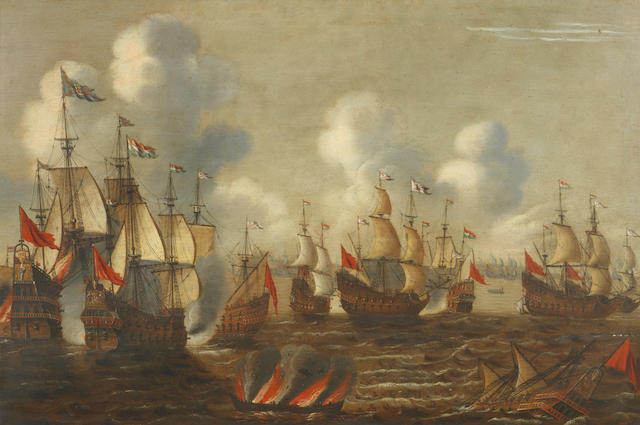


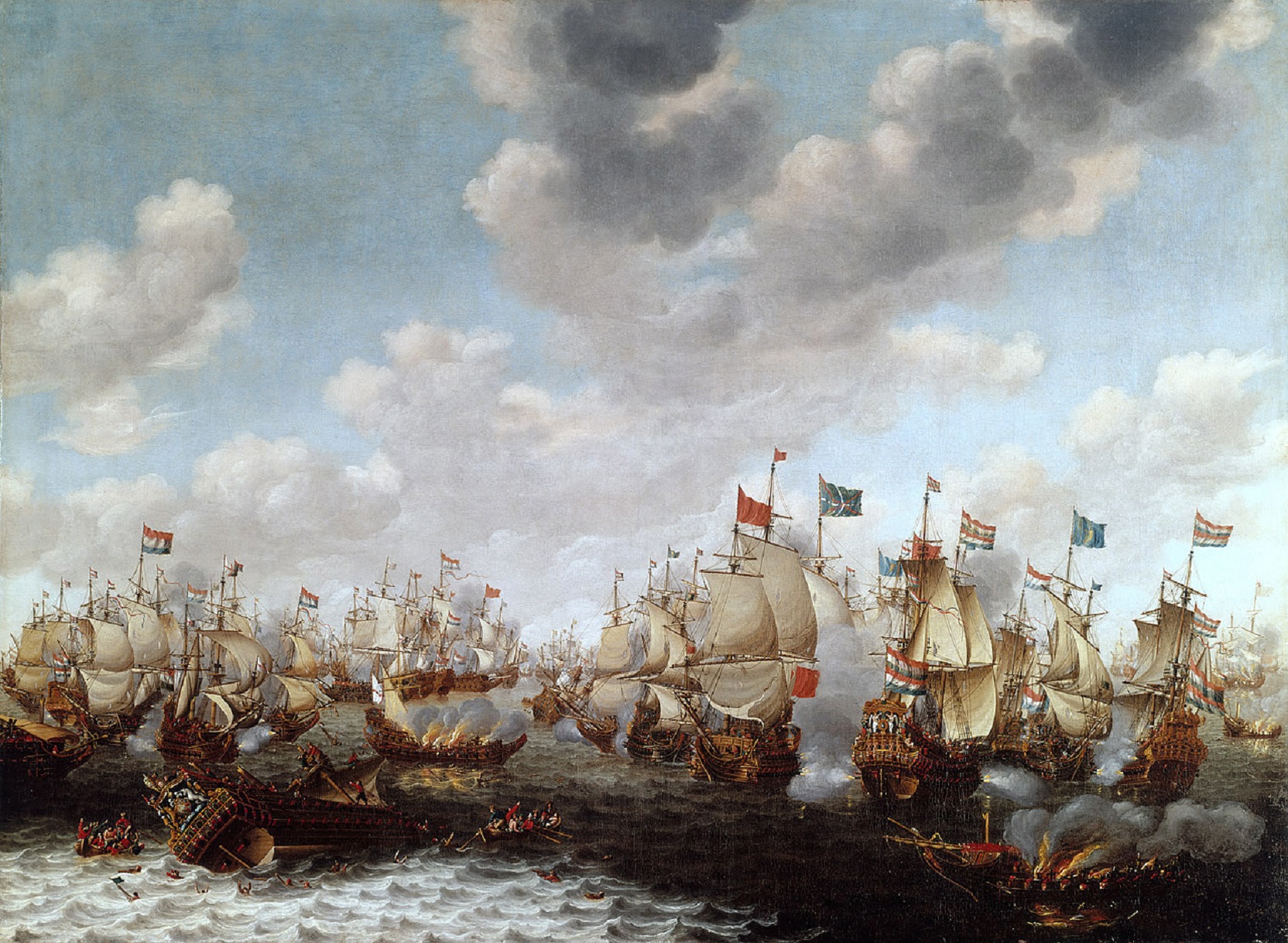
















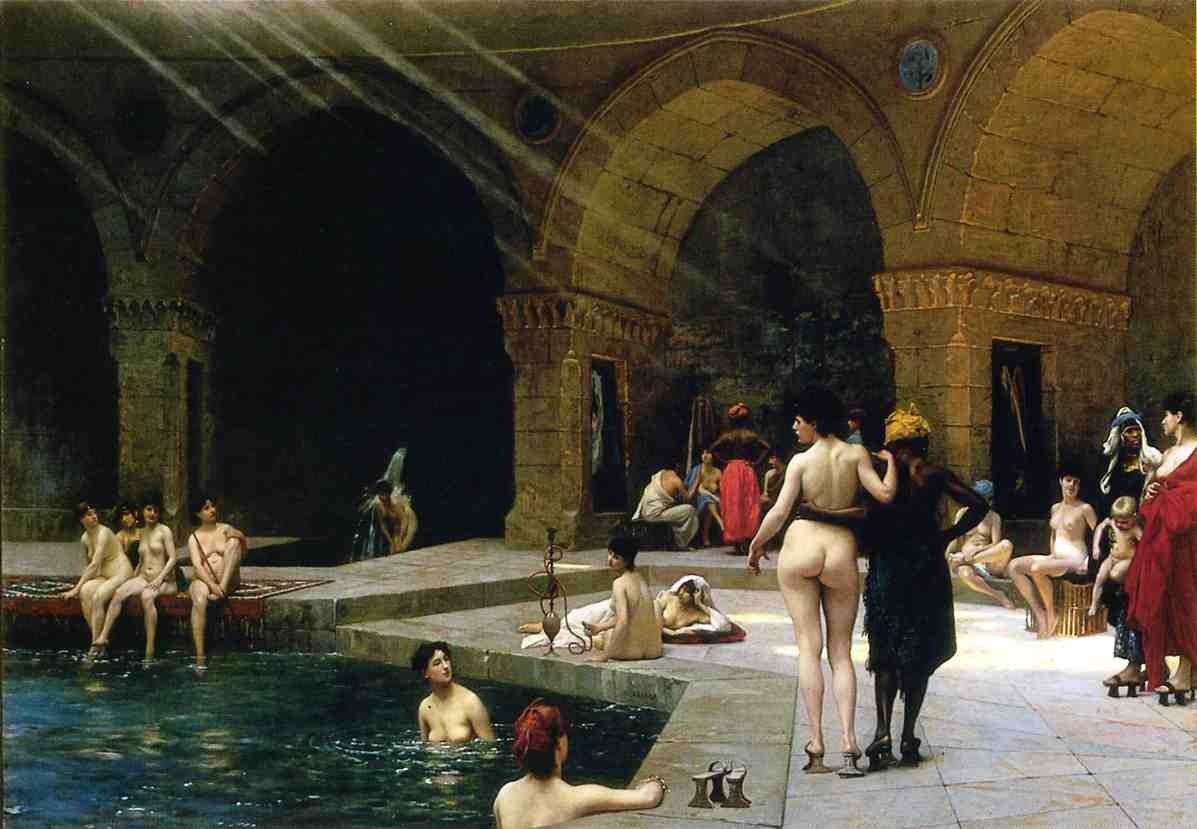









![Derek George Montague Gardner (British, 1914-2007) The battle between the H.M.S. Shannon and the U.S.S. Chesapeake 13-1/4 x 19 in. (33.6 x 48.2 cm.), sight. [not examined out of the frame]](http://images2.bonhams.com/image?src=Images/live/2014-12/04/9093092-28-2.jpg&width=640&height=480&autosizefit=1)
![Derek George Montague Gardner (British, 1914-2007) The H.M.S. Suberb 9-1/2 x 13-3/4 in. (24.1 x 34.9 cm.), sight. [not examined out of the frame]](http://images2.bonhams.com/image?src=Images/live/2014-12/04/9093092-33-2.jpg&width=640&height=480&autosizefit=1)
![Derek George Montague Gardner (British, 1914-2007) The H.M.S. Royal Sovereign off of Fort Manoel, Valletta, Malta 13-1/2 x 20 in. (34.2 x 50.8 cm.), sight. [not examined out of the frame]](http://images2.bonhams.com/image?src=Images/live/2014-12/04/9093092-27-2.jpg&width=640&height=480&autosizefit=1)
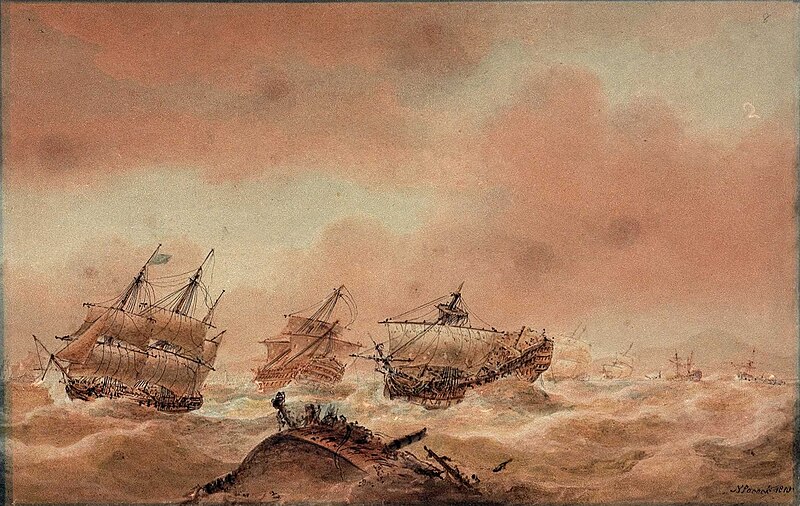
![Derek George Montague Gardner (British, 1914-2007) Nelson's Santa Cruz Squadron 15 x 20 in. (38.1 x 50.8 cm.), sight. [not examined out of the frame]](http://images2.bonhams.com/image?src=Images/live/2014-11/26/9093092-19-1.jpg&width=640&height=480&autosizefit=1)
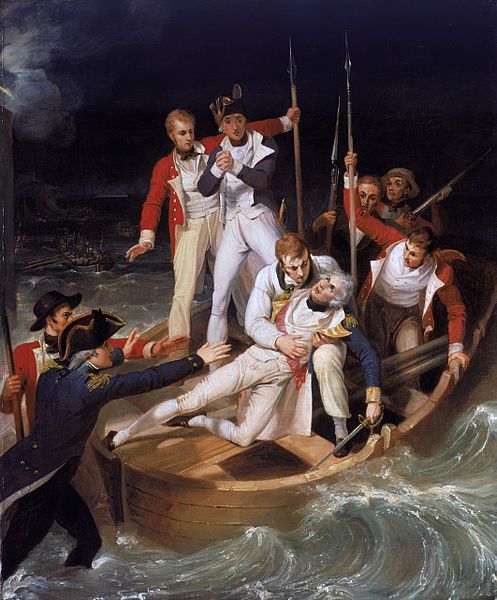
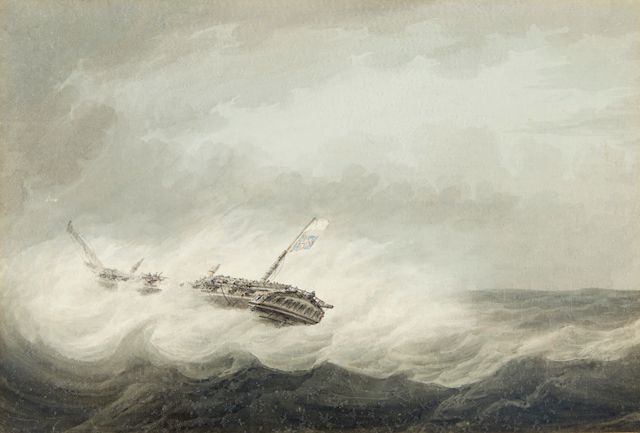
![Samuel Atkins (British, fl.1787-1808) The blockade of Toulon 14-1/2 x 21 in. (36.8 x 53.3 cm.), sight. [not examined out of the frame]](http://images2.bonhams.com/image?src=Images/live/2014-11/26/9093092-14-1.jpg&width=640&height=480&autosizefit=1)

